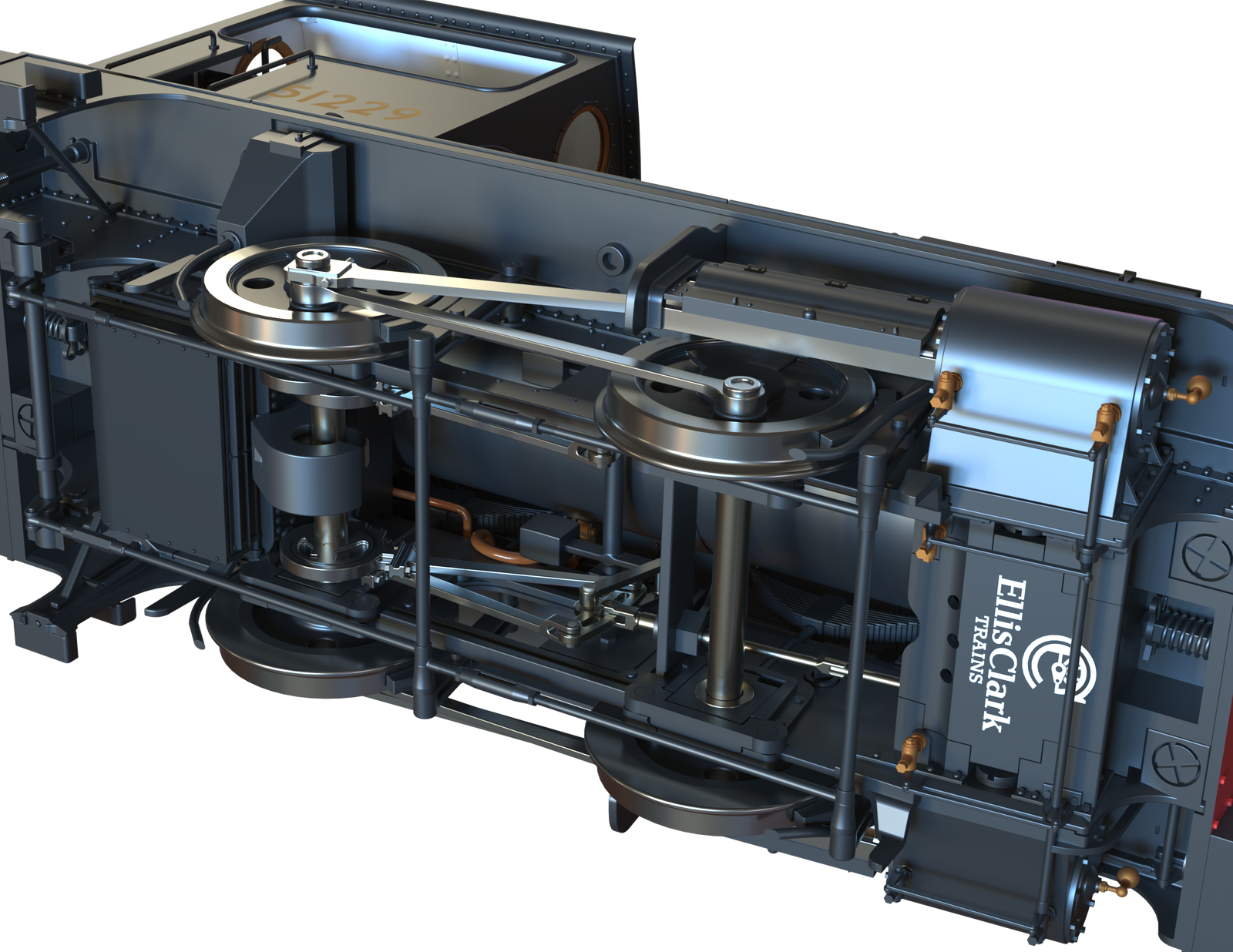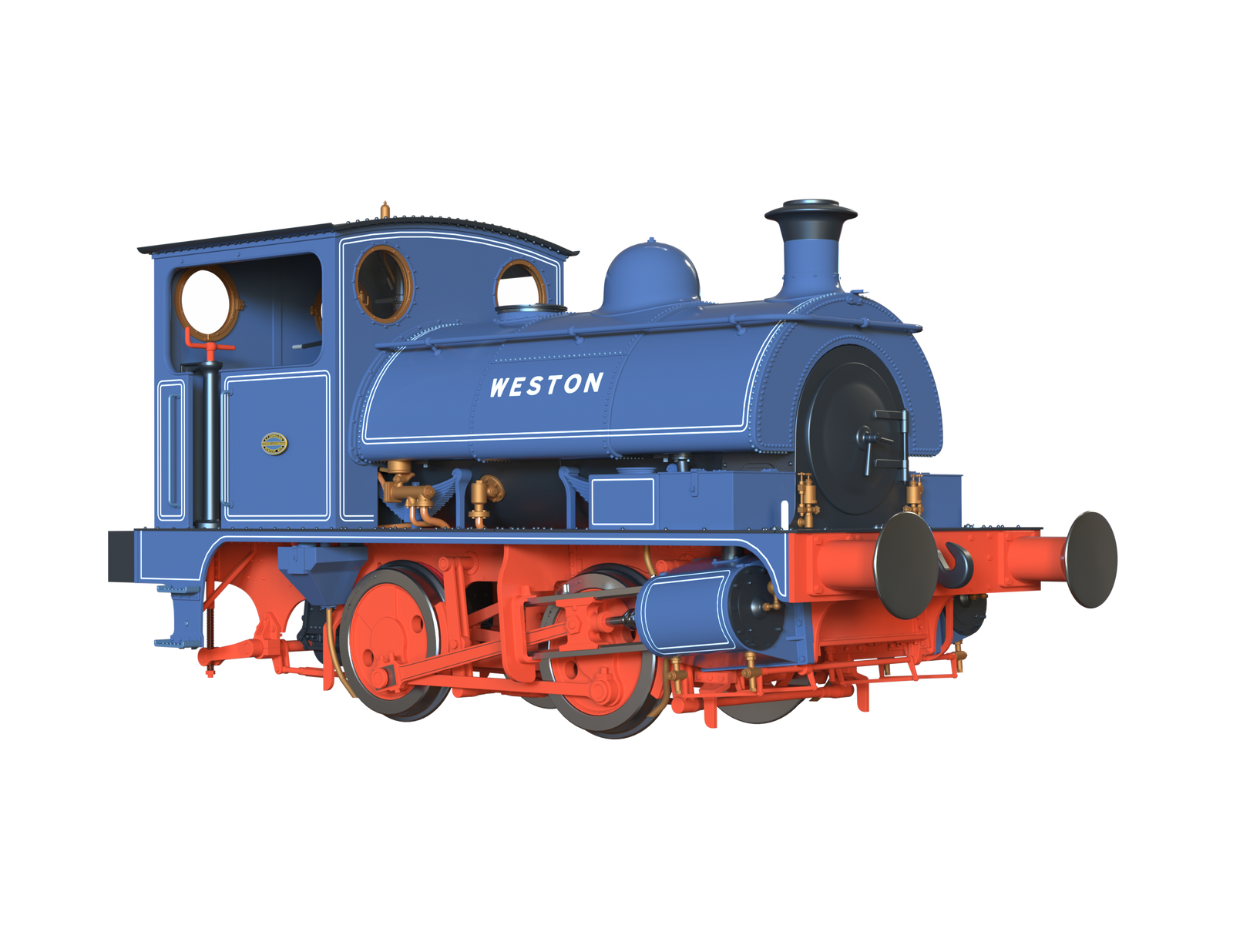Pre-Owned Finescale O Gauge
OO Gauge Projects
Doing small things in a big way is our bread and butter. We’ve been teasing the prospect of a new O Gauge engine for some time, and we’re delighted to announce the next addition to our fleet: the Lancashire and Yorkshire Class 21 ‘Pug’. But when we set to work, we fell so head over heels for these pint-sized characters that we just couldn’t resist cranking up the shrink ray and giving them a OO Gauge little sister.
DCC Sound Fitted Models
DCC Sound Fitted Models
Scale
7mm Finescale O Gauge
Price
DC/DCC Ready - £325.00
DCC Sound - TBA
Release Date
Summer 2026
Variants
11 Liveries
Scale
7mm Finescale O Gauge
Price
DC/DCC Ready - £325.00
DCC Sound - TBA
Release Date
Summer 2026
Variants
11 Liveries
The Lancashire and Yorkshire Railway had some rather twisted outposts – twisted as in tightly curved, that is! The sprawling docks at Liverpool, Fleetwood and Goole all had extensive and sinuous railway systems, as did many shunting yards in the Manchester area. These demanded compact, short-wheelbase engines and until the later years of the nineteenth century employed a rag-tag selection of decrepit examples that were no longer fit for purpose. When John Aspinall became the L&Y’s Chief Mechanical Engineer in 1886, he soon set about modernising – and standardising – the company’s shunting fleet.
Aspinall’s first in-house 0-4-0 emerged from Horwich Works in 1891, with a further 11 entering service that decade. A total of 57 L&Y ‘Pugs’ were scuttling about their business by the time construction ended in 1910. Initially known as ‘1153 Class’ (the number of the first engine), they were redesignated Class 21 in 1920.
All L&Y Pugs were inherited by the LMS in 1923, and it was during the Grouping period that they started to wander, slogging their little hearts out at factories and power stations from Somerset to Scotland. Pugs were resilient, and a lack of dinky diesel shunters meant that many worked into the 1960s. Two L&Y Pugs survive today in preservation – one at the East Lancs Railway and the other just over the hills at Yorkshire’s Keighley & Worth Valley Railway.
The Lancashire and Yorkshire Railway had some rather twisted outposts – twisted as in tightly curved, that is! The sprawling docks at Liverpool, Fleetwood and Goole all had extensive and sinuous railway systems, as did many shunting yards in the Manchester area. These demanded compact, short-wheelbase engines and until the later years of the nineteenth century employed a rag-tag selection of decrepit examples that were no longer fit for purpose. When John Aspinall became the L&Y’s Chief Mechanical Engineer in 1886, he soon set about modernising – and standardising – the company’s shunting fleet.
Aspinall’s first in-house 0-4-0 emerged from Horwich Works in 1891, with a further 11 entering service that decade. A total of 57 L&Y ‘Pugs’ were scuttling about their business by the time construction ended in 1910. Initially known as ‘1153 Class’ (the number of the first engine), they were redesignated Class 21 in 1920.
All L&Y Pugs were inherited by the LMS in 1923, and it was during the Grouping period that they started to wander, slogging their little hearts out at factories and power stations from Somerset to Scotland. Pugs were resilient, and a lack of dinky diesel shunters meant that many worked into the 1960s. Two L&Y Pugs survive today in preservation – one at the East Lancs Railway and the other just over the hills at Yorkshire’s Keighley & Worth Valley Railway.
Although all L&Y Pugs were built to the same design, cosmetic differences crept into the fleet throughout their production, often related to where specific engines worked. Some Pugs had bells connected to their inside motion, for docks and yards where engines shared the road with motor vehicles. Engines working in the Liverpool area had smoke deflectors fitted over their chimneys for when they worked into warehouses (now there’s a cool modelling idea…) or beneath the Liverpool Overhead Railway. And those that worked in Ormskirk’s munition factory during WW1 – where a stray spark could be somewhat ‘problematic’ – sported substantial haystack spark arresters, giving them a definite ‘yankee’ vibe!
Pugs built in the 1890s had circular sprung buffers, but later examples had ‘dumb’ buffers made from wood and rubber, which were a better match for the often-ancient wagons found in docks and yards. Earlier engines were subsequently ‘dumbed down’ as standard in this way.
L&Y Pugs didn’t have bunkers – so the coal upon which they feasted had to be carried in the cab.
Although all L&Y Pugs were built to the same design, cosmetic differences crept into the fleet throughout their production, often related to where specific engines worked. Some Pugs had bells connected to their inside motion, for docks and yards where engines shared the road with motor vehicles. Engines working in the Liverpool area had smoke deflectors fitted over their chimneys for when they worked into warehouses (now there’s a cool modelling idea…) or beneath the Liverpool Overhead Railway. And those that worked in Ormskirk’s munition factory during WW1 – where a stray spark could be somewhat ‘problematic’ – sported substantial haystack spark arresters, giving them a definite ‘yankee’ vibe!
Pugs built in the 1890s had circular sprung buffers, but later examples had ‘dumb’ buffers made from wood and rubber, which were a better match for the often-ancient wagons found in docks and yards. Earlier engines were subsequently ‘dumbed down’ as standard in this way.
L&Y Pugs didn’t have bunkers – so the coal upon which they feasted had to be carried in the cab.
The word ‘pug’ has been applied to many small locomotives from the early days of railways and could be dismissed as an endearing or even slightly derogatory term. But before all you big engines look down your noses at the Little Guy, let’s consider the origins of the word.
“One thing I’ve learned about Pugs: they are a most hearty folk.”*
‘Pug’ comes from ‘pugilist’ – the old-fashioned term for a boxer. Because of their short wheelbases, 0-4-0 engines have a tendency to weave from side to side on the track with alternating piston thrusts – just like a boxer in the ring. Pugs certainly proved their mettle, both through longevity and an ability to punch above their weight when shunting. So they can hold their little chimneys high in the knowledge that there’s more to a name than meets the eye.
*OK, so Tolkien’s Aragorn was actually referring to Hobbits. But we’re so confident that our pint-sized heroes will surprise and delight you that we decided to get creative with literary history!
The word ‘pug’ has been applied to many small locomotives from the early days of railways and could be dismissed as an endearing or even slightly derogatory term. But before all you big engines look down your noses at the Little Guy, let’s consider the origins of the word.
“One thing I’ve learned about Pugs: they are a most hearty folk.”*
‘Pug’ comes from ‘pugilist’ – the old-fashioned term for a boxer. Because of their short wheelbases, 0-4-0 engines have a tendency to weave from side to side on the track with alternating piston thrusts – just like a boxer in the ring. Pugs certainly proved their mettle, both through longevity and an ability to punch above their weight when shunting. So they can hold their little chimneys high in the knowledge that there’s more to a name than meets the eye.
*OK, so Tolkien’s Aragorn was actually referring to Hobbits. But we’re so confident that our pint-sized heroes will surprise and delight you that we decided to get creative with literary history!
By now we’ve hopefully whetted your appetite, and you’ll be eager to know when you can get acquainted with our latest little wonder. The good news is that our Pugs are at an advanced stage of development. O Gauge Pugs will be leading the charge, and we hope to deliver the first of these during Summer 2026. Their little sisters will follow a few months later, in late 2026/early 2027.
The models will be available either DCC Ready (£150) or DCC Sound Fitted with a bespoke sound project (£TBA).
All versions are available to pre-order from Clark Railworks (either online, via email or over the phone) at no upfront cost.
By now we’ve hopefully whetted your appetite, and you’ll be eager to know when you can get acquainted with our latest little wonder. The good news is that our Pugs are at an advanced stage of development. O Gauge Pugs will be leading the charge, and we hope to deliver the first of these during Summer 2026. Their little sisters will follow a few months later, in late 2026/early 2027.
The models will be available either DCC Ready (£150) or DCC Sound Fitted with a bespoke sound project (£TBA).
All versions are available to pre-order from Clark Railworks (either online, via email or over the phone) at no upfront cost.


